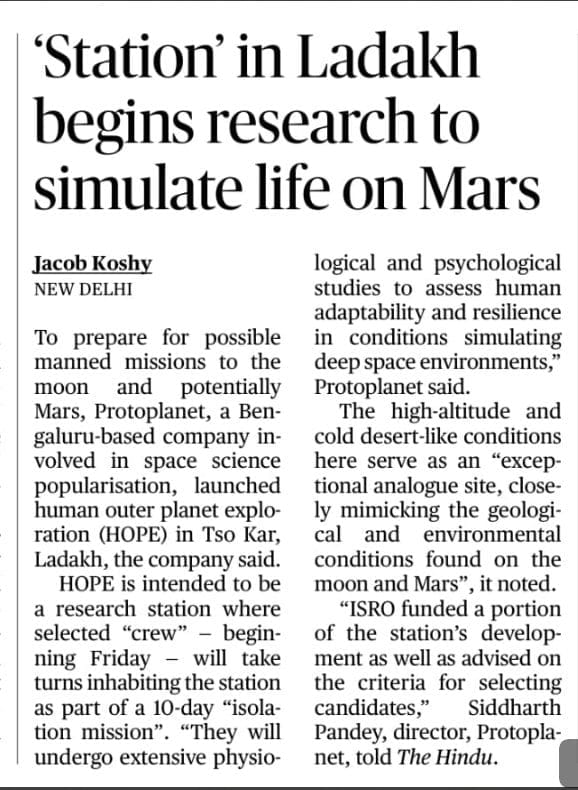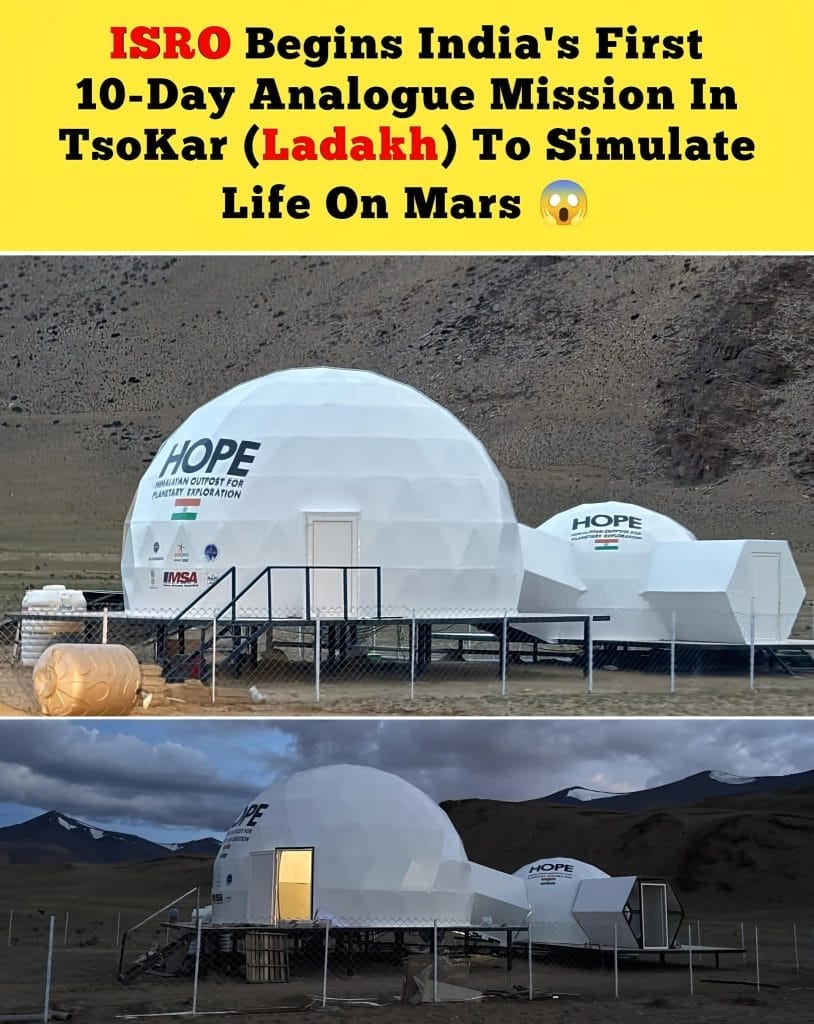
Why in news:
HOPE Station in Ladakh begins research to simulate life on Moon, Mars.

UPSC CSE Relevance:
UPSC CSE in prelims examination has focused on awareness in the fields of IT, space mission, computers, robotics, nano-technology.
UPSC Prelims PYQ 2020:
Q: “The experiment will employ a trio of spacecraft flying in formation in the shape of an equilateral triangle that has sides one million kilometres long, with lasers shining between the craft.” The experiment in question refers to
A) Voyager-2
B) New Horizons
C) LISA Pathfinder
D) Evolved LISA
UPSC Mains PYQ 2022:
Q: Launched on 25th December, 2021, James Webb Space Telescope has been much in the news since then. What are its unique features which make it superior to its predecessor Space Telescopes? What are the key goals of this mission? What potential benefits it hold for the human race?
Project launched by:
- Protoplanet, a Bengaluru-based company involved in space science popularisation.
- ISRO funded a portion of the station’s development as well as advised on the criteria for selecting candidates.
Why Ladakh?
- Ladakh’s unique characteristics, including its high altitude, arid climate, and terrain, closely resemble the conditions found on Mars and the Moon.
- This makes it an ideal location for testing various aspects of space exploration, including habitat design, resource management, and astronaut training.
Objective:
- To prepare for possible manned space missions to the Moon and potentially Mars.
- PM Narendra Modi has stated that he expects India will have its own Bharatiya Antariksh Station by 2035 and a manned Moon mission by 2040.
- The United States’ National Aeronautical and Space Administration (NASA) has indicated the possibility of a manned mission to Mars “in the 2030s”
- It will be instrumental in developing robust protocols and technologies for sustained human presence beyond Earth.
Location – Tso Kar, Ladakh:

Research:
- Selected ‘crew’, beginning August 1, will take turns inhabiting the station as part of a 10-day ‘isolation mission.’
- The crew will undergo extensive physiological, epigenetics and psychological studies to assess human adaptability and resilience in conditions simulating deep space environments.
Other similar stations:
- Mars Desert Station (United States)
- Flashline Mars Arctic Research Station in Canada
- BIOS-3 in Russia
Note:
- HOPE is different from the analogous space mission launched by ISRO in Leh in November 2024.
- India’s first analog space mission kicked off in Leh last year with the collaborative effort by Human Spaceflight Centre, ISRO, AAKA Space Studio, University of Ladakh, IIT Bombay, and supported by Ladakh Autonomous Hill Development Council.
- This analogous mission will simulate life in an interplanetary habitat to tackle the challenges of a base station beyond Earth.

